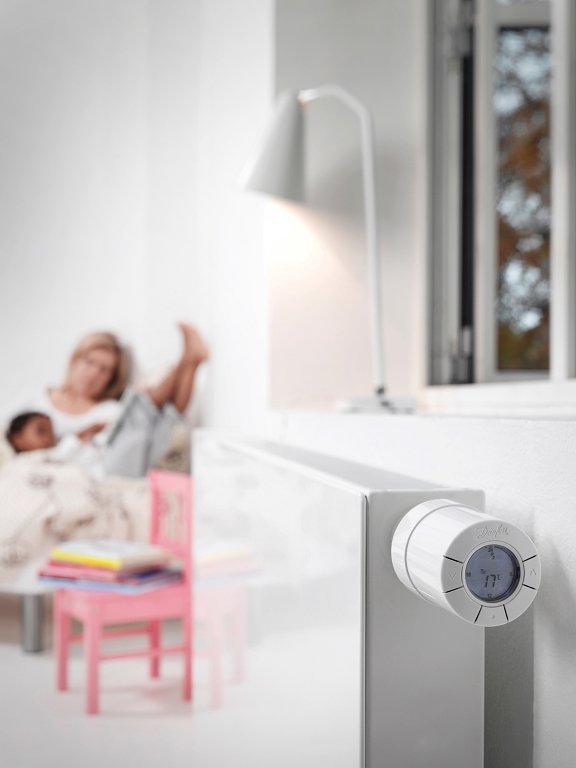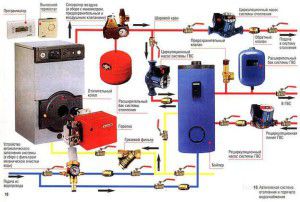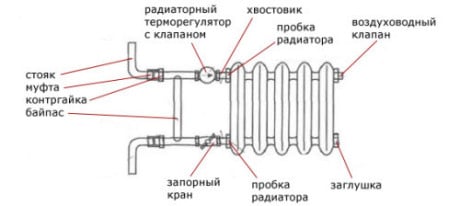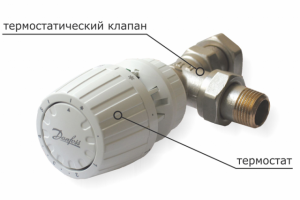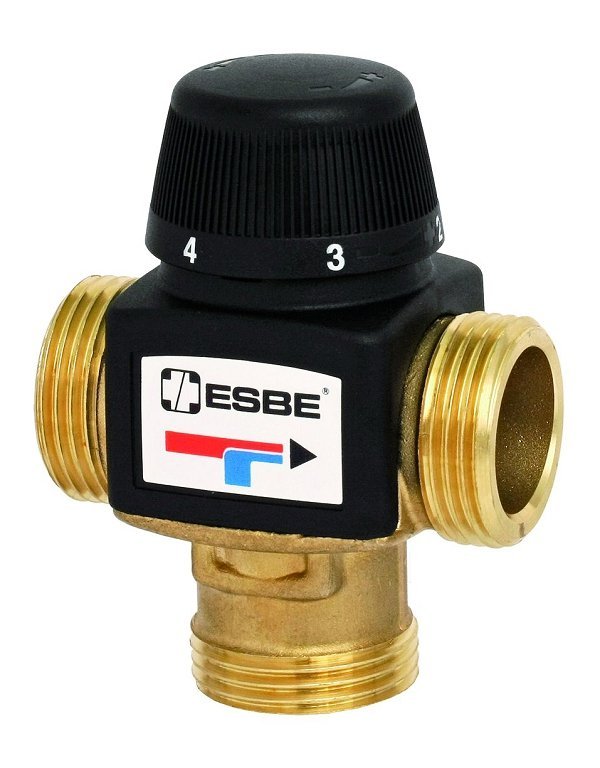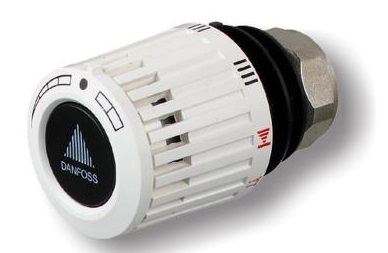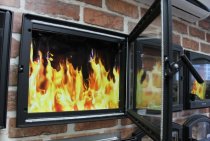How to clean an aluminum heater
Flushing the heater is carried out in order to remove lime deposits from the inner surface of the radiator or to prevent their formation.
Maintenance flushing should be done once a year.
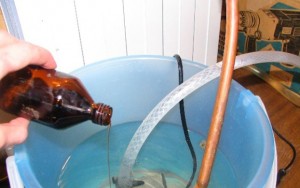
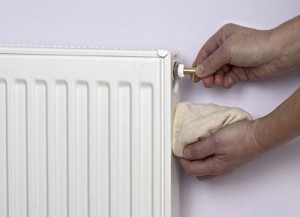
To flush the heating system, it is better to contact a specialist. He will choose the most appropriate method and carry out the procedure competently and efficiently.
- How to pour water into an open and closed heating system?
- Popular Russian-made outdoor gas boiler
- How to correctly bleed air from a heating radiator?
- Expansion tank for closed heating: device and principle of operation
- Gas double-circuit wall-mounted boiler Navien: error codes in case of malfunction
Recommended reading
What heating radiators are better to connect in the apartment? Heating radiators - models and features of choice. Panel heating radiators: options and parameters Non-traditional steel heating radiators: their quality and classification
2016–2017 — Leading heating portal. All rights reserved and protected by law
Copying site materials is prohibited. Any copyright infringement entails legal liability. Contacts
Aluminum battery device
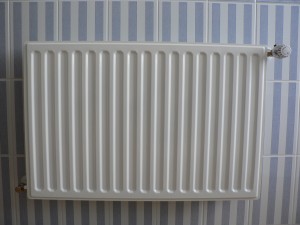
Sectional aluminum heater consists of 3-4 separate sections. As a rule, titanium, silicon, zinc are added to aluminum. These metals make the product more durable and resistant to tearing and corrosion. All sections are connected to each other with a threaded connector. Silicone gaskets are used to seal the connection. Inside, the radiators are polymer-coated to prevent the possibility of battery rupture.
Solid aluminum radiators consist of profiles. Profiles are produced by extrusion.
No additional metals are added to aluminum radiators.
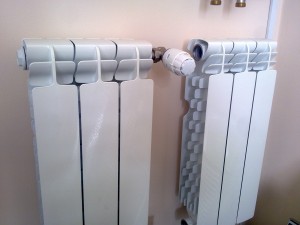
Depending on the production method, radiators are made by casting, extrusion and anodized products (made from aluminum of a higher degree of purification).
Technical characteristics of aluminum heating radiators
In view of the high technical characteristics, many decide to buy an aluminum radiator for heating an apartment. The main technical parameters include:
- operating pressure. It is in the range from 10 to 15 atmospheres. In residential apartments, the working pressure can exceed the norm by 3-4 times. In this regard, such radiators are rarely installed in city houses. But for private houses - such a heater would be an ideal solution;
- pressing pressure. It is in the range from 20 to 50 atmospheres;
- heat transfer coefficient.For a standard section, it is 82-212 W;
- the maximum temperature of the coolant can reach +120 degrees;
- one section can weigh from 1 to 1.5 kg;
- the capacity of each section is from 0.25 to 0.46 l;
- the distance between the axles can be 20, 35, 50 cm. There are models in which this parameter can reach 80 cm.
The manufacturer indicates the parameters for each radiator model in the device passport. Given the technical characteristics of aluminum heating radiators, their price is quite justified and depends on the type of battery, the number of sections and the manufacturer.
Advantages and disadvantages of aluminum radiators
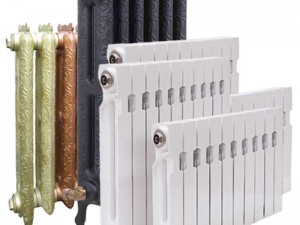
The main advantage of aluminum batteries can be called compactness and much less weight than cast iron systems. You can read more about cast iron radiators here. The equipment warms up very quickly and perfectly transfers heat to the room. The service life is long enough. Another advantage is the division into sections - it is possible to choose the desired length of the battery. It should be noted that the price for aluminum radiators is indicated per section. This makes it easy to calculate the approximate cost of a sectional device.
Because the equipment is small and light, it is easy to install. Installation can be carried out even on a plasterboard wall. Modern models look aesthetically pleasing and stylish. Aluminum is easy to work with. This allows manufacturers to experiment with battery design. You can choose an option for any interior. Most of all, aluminum radiators are suitable for autonomous heating systems. Despite the high technical characteristics and a lot of advantages, the price of aluminum heating batteries is quite affordable.
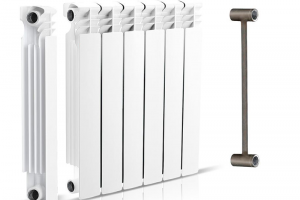
Today, aluminum batteries occupy a leading position in sales of heating equipment.
Many people prefer to buy this type of heater and because of the relatively low cost. For aluminum heating radiators, the average price per section is about 230-300 rubles.
Ways to adjust the temperature in radiators
To create comfortable conditions in an apartment, it often becomes necessary to change the temperature of heating radiators. How can this be done? The fact is that the heating of the batteries occurs due to the passage of a coolant through them. The intensity of heating depends not only on the temperature of the hot liquid, but also on the volume that enters the battery. Since it is impossible to independently influence the temperature of the coolant in a centralized heating system, the heating batteries are adjusted due to a change in the volume of liquid passing through the radiator.

With the help of special control devices installed on radiators, you can:
- save on heating (in the presence of individual heat meters in the apartment);
- maintain a temperature regime in each room;
- avoid drafts from open windows and refuse battery-powered blankets at too high a heating temperature.
Attention! Not all types of central heating systems provide the ability to adjust radiators.It is impossible to adjust batteries in multi-storey buildings in which the heat-carrying fluid is supplied vertically from top to bottom.
Changing the temperature of the batteries with the help of a control valve is possible in buildings with one-pipe and two-pipe heating systems.
Advantages of thermostats for radiators
Among the extensive list of advantages that this undoubtedly necessary equipment possesses, it is especially important to highlight:
- the design of modern thermostats is ergonomic, so that they can be installed in a room with any interior;
- installation of temperature controllers in both existing and new heating systems does not pose any difficulty, since such devices are well suited for any operating conditions and are easy to perform the necessary maintenance;
- by equipping the radiator with a thermostat, there is no need for regular ventilation to control the temperature;
- the temperatures at which such equipment operates range from 5 to 27 ° C. In addition, the set parameter will be strictly maintained, and the error will be no more than 1°C;
- a thermostat for a gas boiler and for any other heating device allows you to evenly distribute hot water throughout the system, which will ensure heating even of heating units remote from the center of the network;
- when direct sunlight enters the room or under the influence of other external factors, the thermostat is able to independently regulate the heating temperature, eliminating excessive heating of the coolant;
- It is impossible not to mention the savings associated with the operation of the thermostat, since the use of such a device will reduce fuel consumption by about 25%, one hundred allows not only to save a significant part of the financial resources, but also reduces the amount of harmful products formed during the combustion process.
Such equipment will be especially effective in private-type houses, where the installation of a thermostat is almost a prerequisite for high-quality and stable operation of the heating system.
Watch a video about thermostats for heating radiators:
However, such mechanisms are also relevant in centralized heating systems, since with their help it is also possible to provide a favorable microclimate for a room in an apartment building.
If the thermostat is mounted in an apartment, then it would be more correct to start installing it in those rooms where the greatest temperature differences are observed, that is, in the kitchen, in the living room, as well as in those rooms that receive a large amount of sunlight. If we talk about private buildings, then it is better to start placing thermostats in them on the upper floors, since, as you know, heated air flows always move upwards, and the temperature difference between the top and bottom of the house can be very significant.
Mentioning the savings factor, in suburban buildings, experts advise installing panel-type radiators with a small capacity and equipped with those thermostats that can quickly adjust to the closing and opening of valves.
The approximate operational life of modern thermal regulators is about 20 years, but with proper installation and proper operation, this figure can become much longer.
If you encounter difficulties in the process of independently connecting these devices, you can always seek help from professional craftsmen who specialize in installing equipment of this type. They can not only give you the right advice regarding installation features, but are also able to provide various photos of thermostat options for radiators, as well as detailed videos to help you complete the installation process faster.
Autonomous heating system
Autonomous heating scheme
What parameters should be followed when choosing a boiler, and how is the heating radiator arranged? These are just a few of the issues that the owner of a private house has to solve when planning a heating system. First, a heating scheme is developed, its main parameters are determined - the temperature regime of operation, the number and location of radiators, and control devices.
The next step is to find out how the heating boiler works and choose the best model.
This is very important, as it will directly affect the efficiency and characteristics of the entire heating circuit of the house.
Heating boiler device
Gas boiler device
The principle of operation of any boiler is to receive thermal energy from an energy carrier (coal, firewood, gas, diesel fuel) and transfer it to a heat carrier. The device of the heating boiler directly depends on the type of fuel used. Consider this on the example of the most common models - gas.
The main component in this case is the burner. In it, energy from hot gas is transferred to water using a heat exchanger. In solid fuel models, this function is performed by the combustion chamber. In addition, the boilers often contain the following components:
- Water supply system to the heat exchanger;
- Chimney pipe for removal of carbon monoxide;
- Control elements - control of flame intensity, CO2 content, thrust, water temperature, etc.;
- Circulation pump - designed to increase the speed of the coolant. The package of most solid fuel and some gas boilers is not included;
- Expansion tank and security system.
When choosing gas models, special attention should be paid to the presence of a second circuit designed for hot water supply. It is not recommended to purchase a boiler whose power is higher than required
This will lead to an increase in energy consumption and, as a result, an increase in financial costs for maintenance.
It is not recommended to purchase a boiler whose power is higher than required. This will lead to an increase in energy consumption and, as a result, an increase in financial costs for maintenance.
The device of heating radiators
Sectional heating battery
The device of the heating radiator has not changed for many years. Despite the use of new manufacturing materials, improvements in the appearance of the battery - when creating it, they are always guided by a proven scheme.
On what principles is the device of a standard heating battery based? It should consist of two components - pipelines through which the coolant flows and the heat exchange surface. When designing, they try to increase the heat output and at the same time reduce the useful volume of the transport highway. To do this, materials with an increased heat transfer rate are used in the heating radiator device - aluminum, copper, etc.
It is important for the user to pay attention to the following parameters of a standard battery device for heating:
Rated power, W. Manufacturers indicate the value of this characteristic at a certain temperature regime of the system. For example - 70/55 or 90/70;
Sectional or panel model. For the former, it is possible to increase the usable area by adding sections;
Connection method
This is important to know when analyzing the design of the heating system in an apartment building. If there is an upper piping, you should purchase models with a side connection.
In addition to installing radiators, their correct piping is required. Its components are shut-off valves, Mayevsky's crane. For greater economy, the installation of a thermostatic valve is recommended.
One of the main factors for the normal operation of the radiator is its proper installation and connection. If the standards are not observed, its efficiency may decrease by 10-15%.
The design and principle of operation of cast iron radiators
Radiators have a sectional design.In appearance, the sections resemble metal columns, inside of which channels for the coolant are provided. These elements are interconnected using a nipple system. The joints are sealed with paronite or rubber gaskets. The height of the devices is 350-1500 mm, the depth reaches 65-500 mm. The power of radiators depends on the number of sections and the heat transfer area. In rooms, cast iron batteries are placed under window sills. Usually wall mounts are brackets, but there are floor models with legs.
Depending on the model, cast iron radiators have a power of 100-300 watts. Approximately 25-35% of heat is transferred by radiation (radiation), part - by convection. Thanks to radiation, heating is better: the radiator heats objects, not just air. Warm layers of air rise up, and radiation provides heating of the lower part of the room. This creates the most comfortable temperature conditions.
Cast iron battery design
Types of heating systems and the principle of adjusting radiators
Handle with valve
In order to properly adjust the temperature of the radiators, you need to know the general structure of the heating system and the layout of the coolant pipes.
In the case of individual heating, adjustment is easier when:
- The system is powered by a powerful boiler.
- Each battery is equipped with a three-way valve.
- Forced pumping of the coolant has been installed.
At the stage of installation work for individual heating, it is necessary to take into account the minimum number of bends in the system. This is necessary in order to reduce heat loss and not reduce the pressure of the coolant supplied to the radiators.
For uniform heating and rational use of heat, a valve is mounted on each battery. With it, you can reduce the water supply or disconnect it from the general heating system in an unused room.
- In the central heating system of multi-storey buildings, equipped with a supply of coolant through a pipeline from top to bottom vertically, it is impossible to adjust the radiators. In this situation, the upper floors open windows due to the heat, and it is cold in the rooms of the lower floors, since the radiators there are barely warm.
- More perfect one-pipe network. Here, the coolant is supplied to each battery with its subsequent return to the central riser. Therefore, there is no noticeable temperature difference in the apartments of the upper and lower floors of these houses. In this case, the supply pipe of each radiator is equipped with a control valve.
- A two-pipe system, where two risers are mounted, provides the supply of coolant to the heating radiator and vice versa. To increase or decrease the coolant flow, each battery is equipped with a separate valve with a manual or automatic thermostat.
Purpose of the thermostat elements
All functional elements that make up the thermostat include:
- thermal valve;
- thermal element;
- thermal element;
- connector;
- transmission rod;
- spool valve;
- union nut;
- compensator;
- fixation ring;
- scale.
The thermoelement has the appearance of an element that is equipped with a cylinder filled with a working composition that reacts strongly to any temperature changes around, and its walls from the inside are made in compliance with the corrugation technology. Such a mechanism is called a bellows.
When the temperature increases, the volume of the working medium also increases, which, in turn, causes the working rod to move and block the movement of the heat carrier. In the case of a decrease in temperature, the volume of the working medium, on the contrary, decreases, while compressing the bellows itself. This leads to the reverse movement of the rod, which opens the way for the coolant to the heating radiator. A similar cycle of compression and stretching in modern devices is repeated a huge number of times, which makes it possible to operate them for a very long amount of time.
Three-way valve
An unconventional device for controlling the temperature of heating appliances is a three-way valve. It is placed at the junction of the bypass and the supply pipe that goes to the battery. In order for the valve to perform the function of stabilizing the heating level of the radiator, it must have a thermostatic head. If the temperature near the head rises above the required value, the coolant supply to the battery is stopped, the fluid flow moves through the bypass. When cooling occurs, the valve opens again and the radiator heats up. This adjustment method is suitable for single-pipe systems with vertical wiring.
Important! In houses with centralized heating, the heating fluid usually contains foreign particles that clog the thermostats. Therefore, in the apartment, you can safely install manual taps or valves, as well as three-way valves.
If you want to install automatic heat regulators, you must put filters in front of them, which will have to be cleaned regularly.
How is the heating system in multi-storey buildings
The heating system in high-rise buildings was carried out according to standard designs. And if the neighboring five-story Khrushchev buildings (or nine-story buildings, etc.) look like twins, this does not mean that the heating in them should be the same as their appearance. And the reason is not that
Houses built with a difference of three to five years can be made according to different projects. So it turns out that in one house, people on the fifth floor complain about the heat, and in another, on the first floor, the windows are not closed for the same reason.
With top wiring, heat flows from top to bottom. At the same time, in order for it to reach the top (pipes come to the basement), in one of the entrances, closer to the middle of the house, the main riser is performed. Here, everything is warm upstairs (to the attic or under the ceiling of the apartments on the upper floor) and is fed through it.
According to the project, the diameter of this riser is the same as the pipes in the basement, which are used to heat the entire house. But sometimes, in order to save money, it is reduced, and then all winter the commissions are looking for warmth in this house.
With the lower wiring in the basement, two pipes of the same diameter are laid side by side along both facades of the house. From one of them, pipelines rise to the very top floor (these are supply risers, they are hotter to the touch). Return risers are connected to the other, through which the coolant returns from the upper floors.
In this regard, is it any wonder that in one apartment one battery will be hotter, and the other almost cold; because they are connected to risers with different temperatures.
With the lower wiring, there are U-shaped and T-shaped circuits. Previously, there were two-pipe systems, but they were abandoned in order to save money.
In addition, the project also determined the scheme for connecting the house: elevator (or with a pump), elevatorless (direct connection), independent (via a boiler).
Needless to say, the diameters of all pipelines and the number of sections of heating devices were determined by calculation and indicated in standard projects. Are there many houses left in which additional sections have not been installed, heating has not been brought to the loggia, “warm floor” has not been connected, or something else?
All this complicates the adjustment of the heating system of houses and the uniform distribution of heat over the risers of apartments.
Heating systems are different. Especially now that multi-level houses have come into operation.
The latest models have individual heating, and this is justified. Who wants hot and expensive, who looks like a vest and will live economically.
There are also houses with an individual boiler room on the roof. Such mini boiler rooms should work without human control. In the sense that start-up and adjustment, and then monitoring through a computer. At first, people were insured and worked there. The essence of the operation of these mini boilers is that water is heated on the roof of the house, and then it is supplied with a pump through pipes down.This method, with forced water supply, makes it possible to evenly heat radiators throughout the house. Borrowed this heating system in France. The only pity is that not everything is completely in French, they inserted our rationalization proposals to reduce the cost. But in principle, the system works. In Belgorod, quite a lot of 12-18-storey houses are heated in this way. They are served by a brigade such as a technical ambulance. If there is a failure, they receive a signal and the brigade leaves. In normal times, it works automatically, without the presence of an operator.
add to favorites link thank you
Selection Guide
Depending on the type of heating system and the installation conditions of the device, valve-thermal head kits in various combinations can be used to control the flow of the coolant. In single-pipe heating systems, it is recommended to install valves with increased capacity and low hydraulic resistance (DANFOSS product marking - RA-G, RA-KE, RA-KEW).
The same recommendation applies to two-pipe gravity systems, where the coolant circulates naturally, without forced stimulation. If the heating scheme is two-pipe with a circulation pump, then you should choose a valve with the ability to adjust the throughput (DANFOSS marking - RA-N, RA-K, RA-KW). This adjustment is quite simple and no special tool is needed.
When the issue with the selection of the valve is resolved, you need to decide on the type of thermal head. They are offered in the following versions:
- With an internal thermocouple (as in the diagram above).
- With remote temperature sensor.
- With external regulator.
- Electronic (programmable).
- Anti-vandal.
A conventional thermostat for heating radiators with an internal sensor is accepted for installation if it is possible to position its axis horizontally so that the room air freely flows around the body of the device, as shown in the figure:
Attention! It is not allowed to install the thermostat on the battery in a vertical position, the heat flow rising from the supply pipeline and the valve body will affect the bellows, as a result of which the device will not work correctly. If horizontal mounting of the head is not possible, then it is better to purchase an external temperature sensor for it, complete with a capillary tube 2 m long
It is at this distance from the radiator that this device can be placed by attaching it to the wall:
If horizontal mounting of the head is not possible, then it is better to purchase a remote temperature sensor for it complete with a capillary tube 2 m long. It is at this distance from the radiator that this device can be placed by attaching it to the wall:
In addition to vertical mounting, there are other objective reasons for buying a remote sensor:
- heating radiators with a temperature controller are located behind thick curtains;
- in the immediate vicinity of the thermal head there are pipes with hot water or there is another heat source;
- the battery is under a wide window sill;
- the internal thermoelement enters the draft zone.
In rooms with high interior requirements, batteries are often hidden under decorative screens made of various materials. In such cases, the thermostat that has fallen under the casing registers the temperature of the hot air accumulating in the upper zone and can completely shut off the coolant. Moreover, access to head control is completely closed. In this situation, the choice should be made in favor of an external regulator combined with a sensor. Options for its placement are shown in the figure:
Electronic thermostats with a display also come in two types: with built-in and removable control unit.The latter differs in that the electronic unit is disconnected from the thermal head, after which it continues to function normally. The purpose of such devices is to adjust the temperature in the room according to the time of day in accordance with the program. This allows you to reduce the heating output during working hours when no one is at home and in other similar cases, which leads to additional energy savings.
When there are small children in the house who want to try everything with their own hands, it is better to install an anti-vandal type thermostat with a casing that protects the device settings from unskilled interference. This also applies to thermostats in other public buildings: kindergartens, schools, hospitals, and so on.
